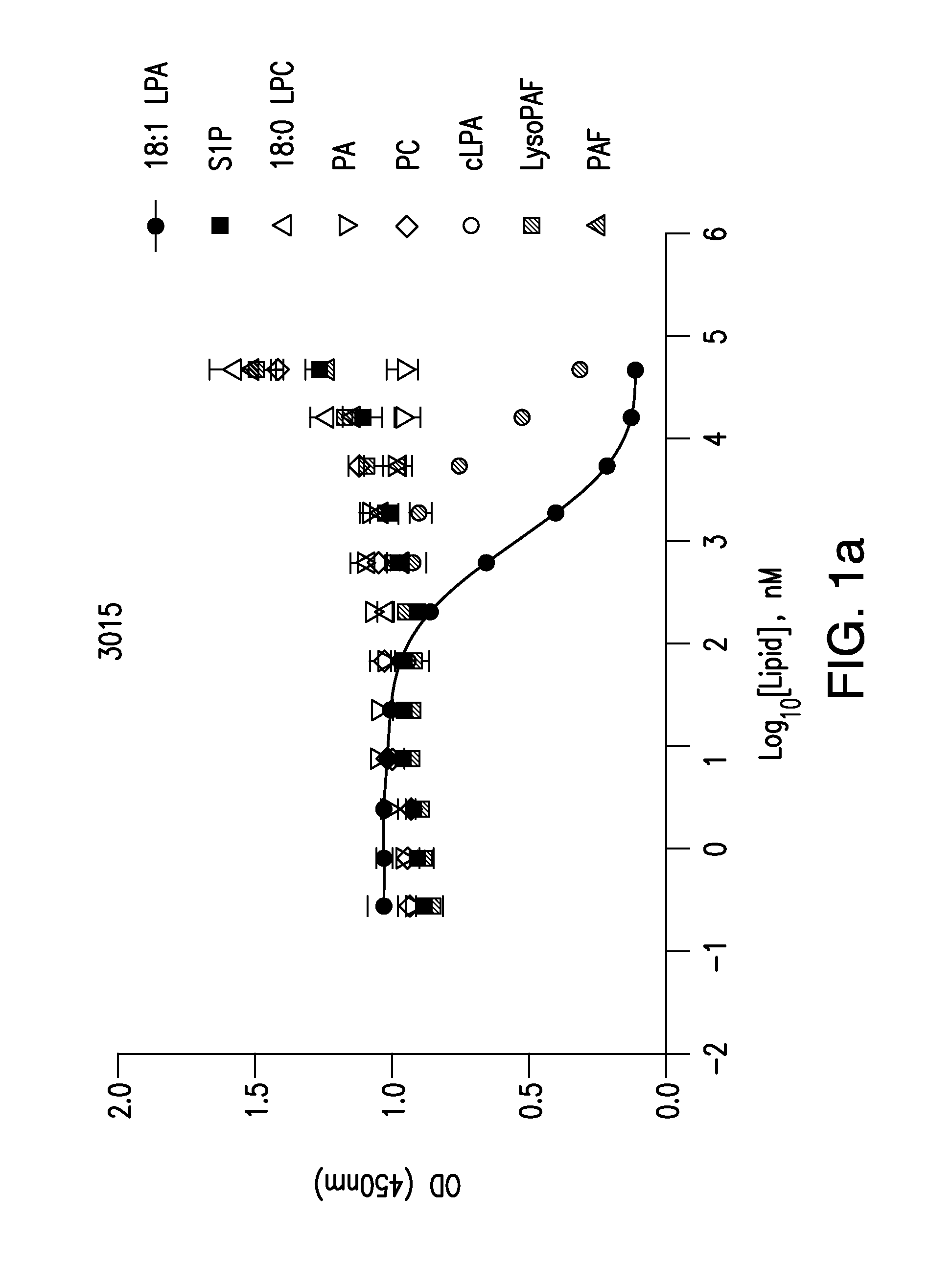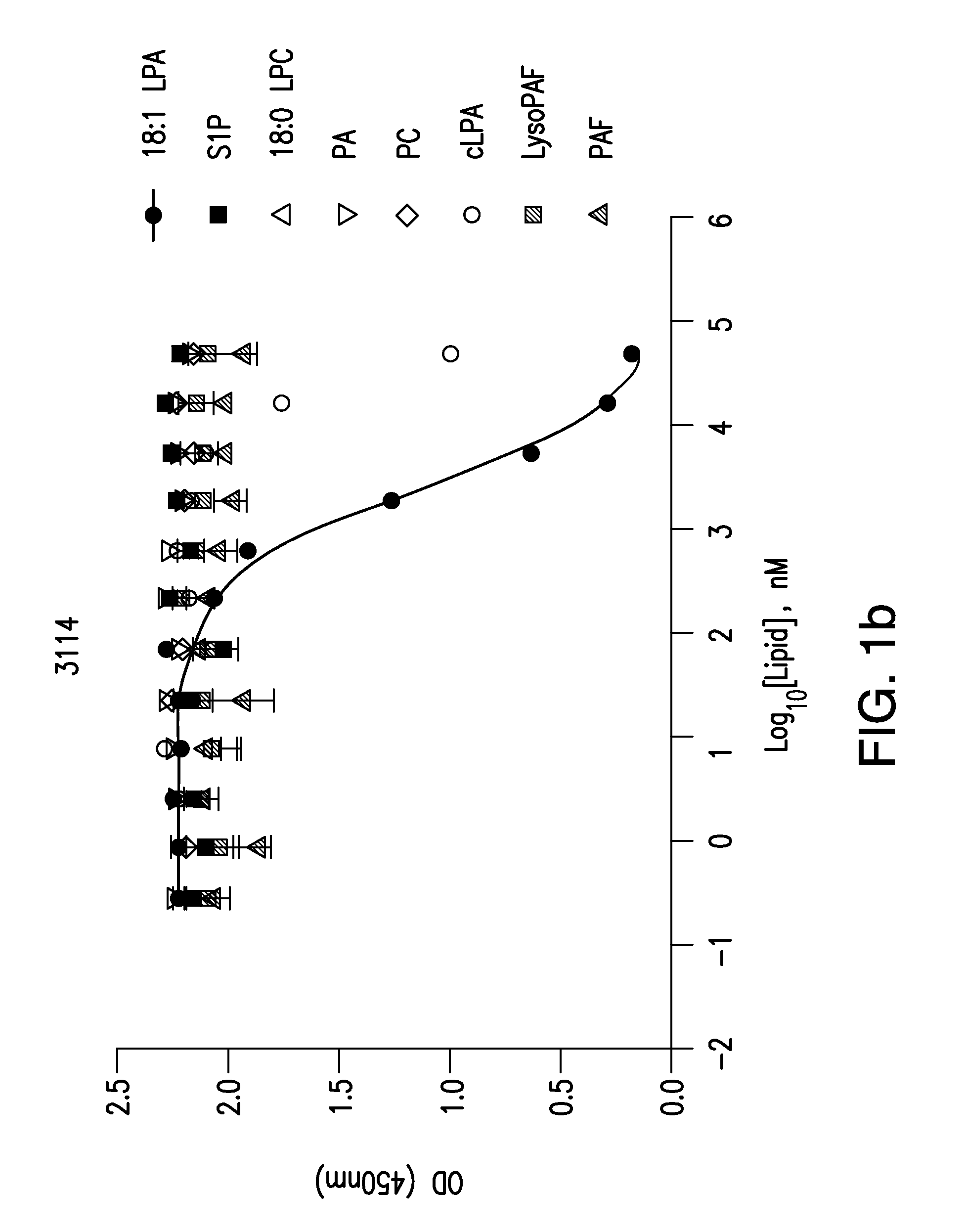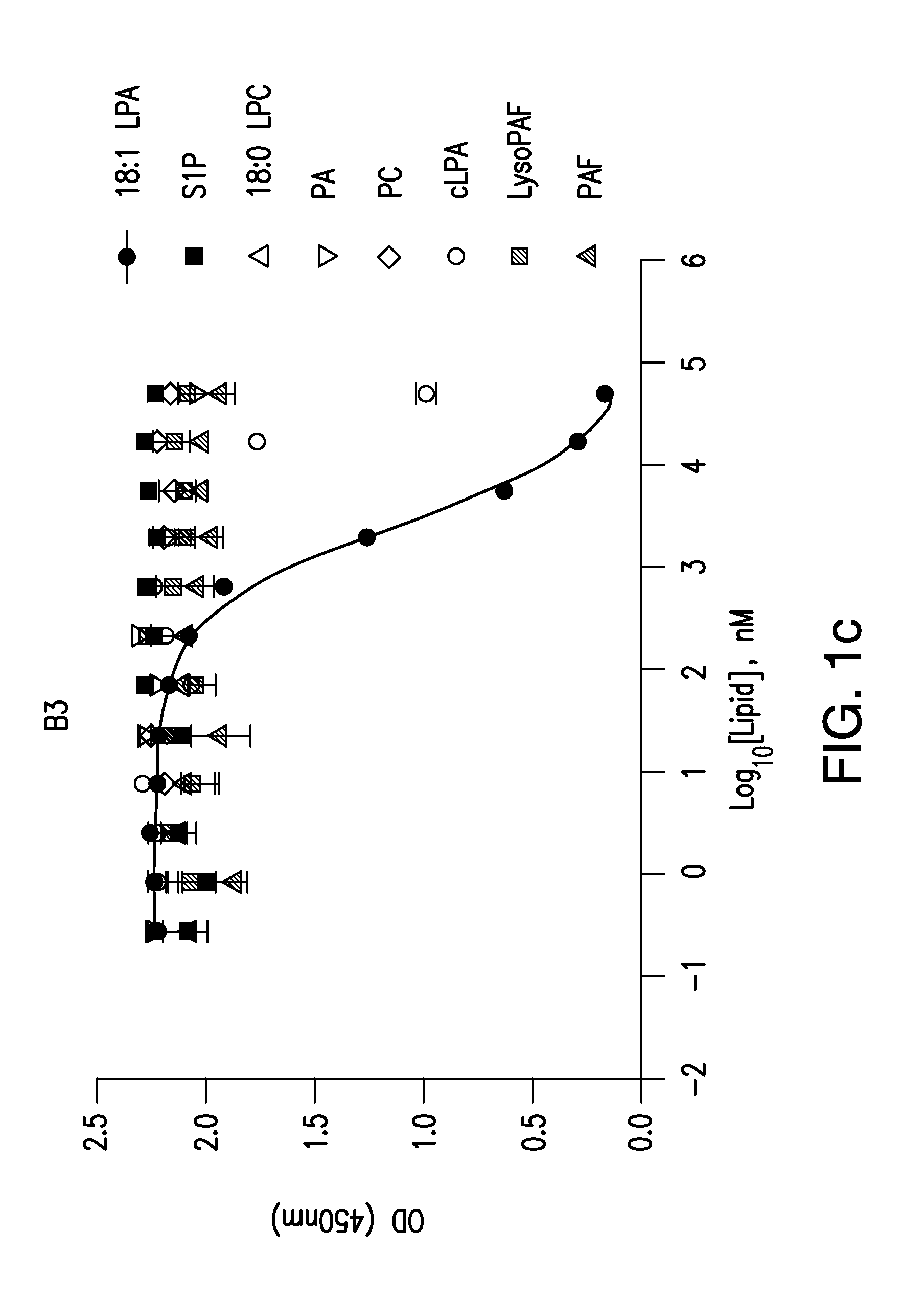Prevention and treatment of pain using antibodies to lysophosphatidic acid
a technology of lysophosphatidic acid and antibody, applied in the field of agents, can solve the problems of affecting the treatment effect, so as to reduce the pain and reduce the pain vocalization
- Summary
- Abstract
- Description
- Claims
- Application Information
AI Technical Summary
Benefits of technology
Problems solved by technology
Method used
Image
Examples
example 1
Monoclonal Antibodies to LPA
[0161]Murine monoclonal antibodies to LPA were made as described in U.S. Patent Application Publication No. 20100034814, which is commonly owned with the instant application and is incorporated herein in its entirety and for all purposes. Six hybridoma clones were selected for characterization based on their superior biochemical and biological properties. Mouse hybridoma cell lines 504B3-6C2, 504B7.1, 504B58 / 3F8, 504A63.1 and 504B3A6 (corresponding to clones referred to herein as B3, B7, B58, A63, and B3A6, respectively) were received on May 8, 2007 by the American Type Culture Collection (ATCC Patent Depository, 10801 University Blvd., Manassas, Va. 20110) for patent deposit purposes on behalf of LPath Inc. and were granted deposit numbers PTA-8417, PTA-8420, PTA -8418, PTA-8419 and PTA-8416, respectively. All anti-LPA antibodies and portions thereof referred to herein were derived from these cell lines.
[0162]The binding of 6 anti-...
example 2
Cloning of the Murine Anti-LPA Antibodies—Overview
[0168]Chimeric antibodies to LPA were generated using the variable domains (Fv) containing the active LPA binding regions of one of three murine antibodies from hybridomas with the Fc region of a human IgG1 immunoglobulin. As those in the art will appreciate, “humanized” antibodies can be generated by grafting the complementarity determining regions (CDRs, e.g. CDR1-4) of the murine anti-LPA mAbs with human antibody framework regions (e.g., Fr1, Fr4, etc.) such as the framework regions of an IgG1.
[0169]The overall strategy for cloning of the murine mAb against LPA consisted of cloning the murine variable domains of both the light chain (VL) and the heavy chain (VH) from each antibody. The consensus sequences of the genes show that the constant region fragment is consistent with a gamma isotype and that the light chain is consistent with a kappa isotype. The murine variable domains were cloned together with the constant domain of the ...
example 3
[0170]Murine antibody clone B7 has high affinity for the signaling lipid LPA (KD of 1-50 pM as demonstrated by surface plasmon resonance in the BiaCore assay, and in a direct binding ELISA assay); in addition, B7 demonstrates high specificity for LPA, having shown no binding affinity for over 100 different bioactive lipids and proteins, including over 20 bioactive lipids, some of which are structurally similar to LPA. The murine antibody is a full-length IgG1k isotype antibody composed of two identical light chains and two identical heavy chains with a total molecular weight of 155.5 kDa. The biophysical properties are summarized in Table 4, below.
TABLE 4General Properties of Murine antibody B7IdentityB7 (also referred to as LT3000 or Lpathomab)Antibody isotypeMurine IgG1kSpecificityLysophosphatidic acid (LPA)Molecular weight155.5 kDaOD of 1 mg / mL1.35 (solution at 280 nm)KD1-50 pMApparent Tm67° C. at pH7.4AppearanceClear if dissolved in 1× PBS buffer (6.6 mMphosph...
PUM
| Property | Measurement | Unit |
|---|---|---|
| molecular weight | aaaaa | aaaaa |
| time | aaaaa | aaaaa |
| concentrations | aaaaa | aaaaa |
Abstract
Description
Claims
Application Information
 Login to View More
Login to View More - R&D
- Intellectual Property
- Life Sciences
- Materials
- Tech Scout
- Unparalleled Data Quality
- Higher Quality Content
- 60% Fewer Hallucinations
Browse by: Latest US Patents, China's latest patents, Technical Efficacy Thesaurus, Application Domain, Technology Topic, Popular Technical Reports.
© 2025 PatSnap. All rights reserved.Legal|Privacy policy|Modern Slavery Act Transparency Statement|Sitemap|About US| Contact US: help@patsnap.com



